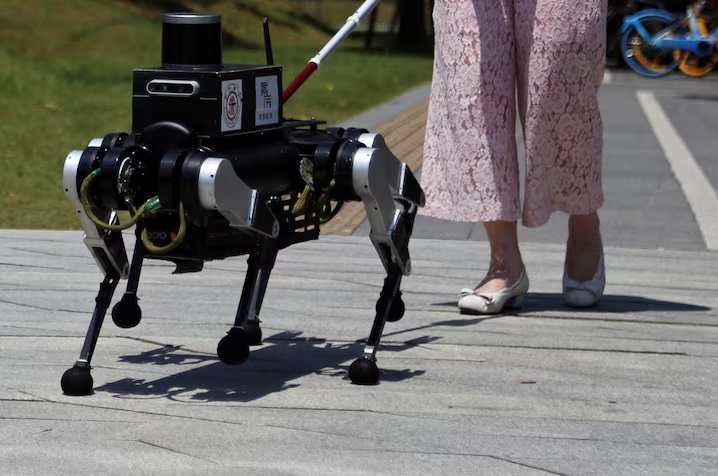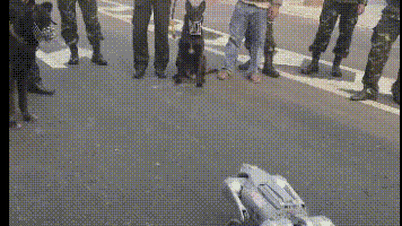
A research team in Shanghai (China) is developing a robot guide dog, integrating artificial intelligence (AI) technology, to help the visually impaired move more conveniently.
This robot dog is currently in the testing phase in Shanghai. The robot dog is the same size as a real dog, but has 6 legs, allowing it to move with maximum flexibility and stability.
Thanks to the integration of AI technology into the voice recognition feature, the robot dog can “hear” and “respond” to the commands of the visually impaired. In addition, thanks to AI technology and a system of cameras and sensors, the robot dog can plan routes and navigate when participating in traffic, including the ability to recognize traffic lights. These are things that conventional guide dogs cannot do.
The demand for guide dogs in China is quite high. Statistics show that the country currently has just over 400 guide dogs to serve about 20 million visually impaired people. Meanwhile, the supply of regular guide dogs is limited due to difficulties in breeding and the need for intensive training.
Professor Gao Feng, head of the research team at the School of Mechanical Engineering, Jiao Tong University in Shanghai, believes that mass production of robot dogs could make up for the shortage, bringing more opportunities to the blind community in China as well as around the world.
Guide dog robots are also being researched and developed in many countries, including Australia and the UK.
According to Nguyen Ha/VNA
Source: https://doanhnghiepvn.vn/cong-nghe/cho-robot-dan-duong-ho-tro-nguoi-khiem-thi/20240702053305885





![[Photo] The moment Harry Kane lifted the Bundesliga trophy for the first time](https://vphoto.vietnam.vn/thumb/1200x675/vietnam/resource/IMAGE/2025/5/11/68e4a433c079457b9e84dd4b9fa694fe)













![[Video] Bringing environmental technology from the lab to life](https://vphoto.vietnam.vn/thumb/402x226/vietnam/resource/IMAGE/2025/5/11/57d930abeb6d4bfb93659e2cb6e22caf)
![[Video] Product risk classification: Solution to reform quality management, reduce burden for businesses](https://vphoto.vietnam.vn/thumb/402x226/vietnam/resource/IMAGE/2025/5/11/cbcd6b50805549a5bbb9e8e6354eda70)

![[Video] Domain name “.vn” - National symbol in cyberspace](https://vphoto.vietnam.vn/thumb/402x226/vietnam/resource/IMAGE/2025/5/11/ff459b2b640347a5948e3424e5c256d0)


















































































Comment (0)